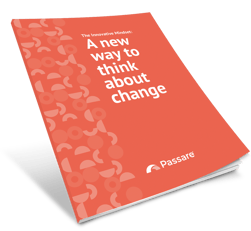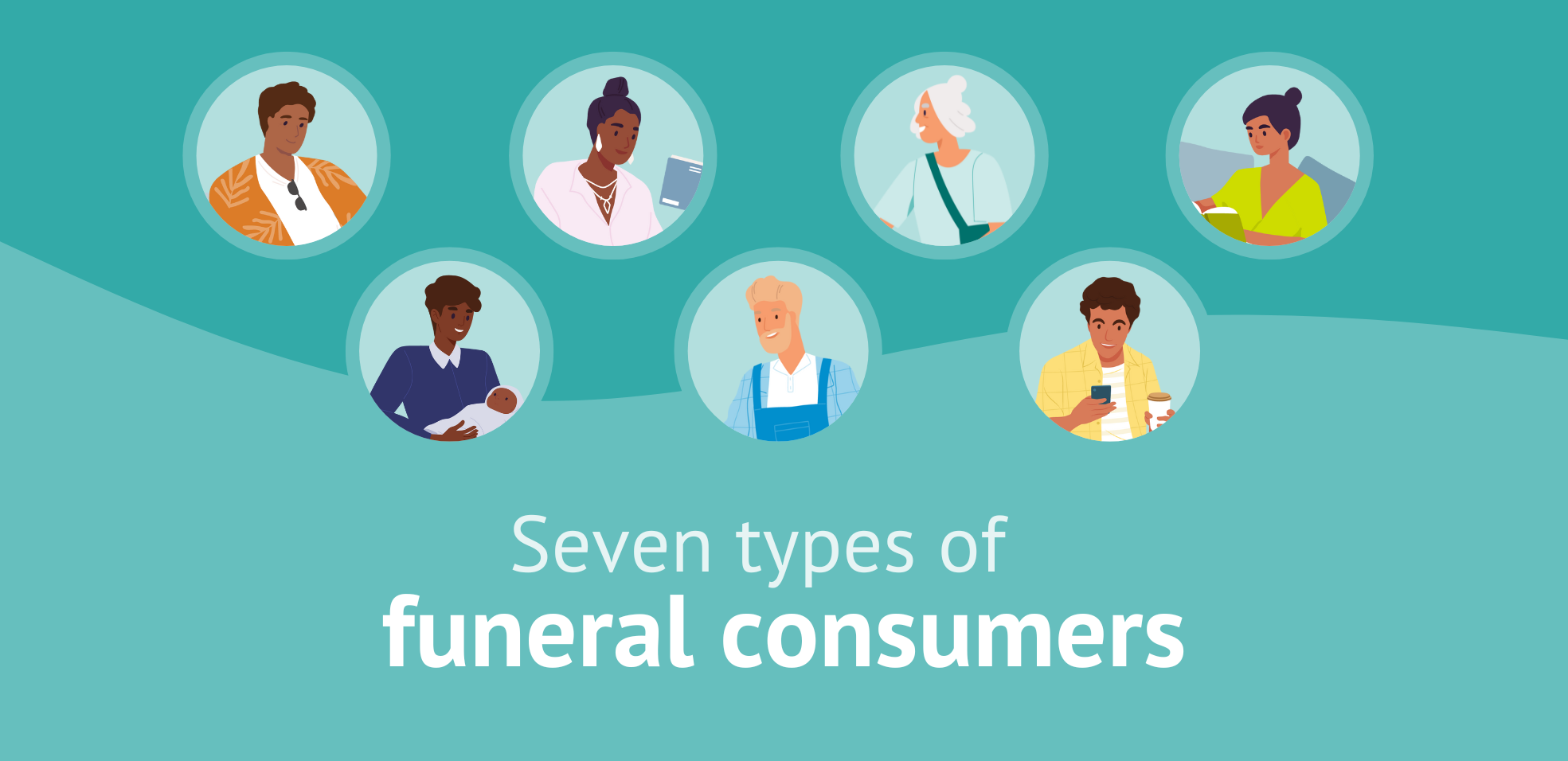4 Steps to Be More Innovative at Your Funeral Home
January 06, 2023
Every funeral director responds to a changing situation in one of three ways: they ignore it, react to it, or anticipate it and prepare for it. The pandemic revealed this within us, but the truth is, change is happening all the time, and we have to respond to it.
How one responds can reveal the type of mindset they have: ignorant, idle, or innovative.
Read an overview of all the mindsets here.
As the title suggests, we’ll focus on the innovative mindset and share a few ways to achieve this mindset.
As mentioned previously, people with an innovative mindset are not trying to fight change. They know it’s coming, so they look for ways to change. Even if processes are working, they’re constantly asking, “Yes, but how could it be better?” They look at industry trends and tune into family preferences. They see how other industries are adapting to societal changes and anticipate a ripple effect of change in their funeral home.
But how can one have an innovative mindset?
Each funeral home has different goals and processes they are trying to achieve, so applying innovation will look somewhat different for each. However, we do know that despite differences in goals, processes, business size, etc, there are a few steps to take in adopting an innovative mindset at your funeral home. These suggestions will help you become more innovative in your decision-making and the way you serve families - regardless of your current mindset.
1. Work on self-awareness
When applying a new mindset in any type of business, you first have to understand the motivations behind your actions and decisions. Some might coin this as growing your self-awareness. When you become more self-aware, you’re able to see exactly why you do or don’t do certain things and the true motivations behind those decisions.
So, what’s your motivation?
If you’re like most funeral directors we’ve talked to, the answer will be some variation of “to serve families.” We’d hope so; otherwise, you’re in the wrong profession. To truly understand your motivations, answer this follow-up question:
Do your actions match this motivation?
In other words, do the business decisions you make match your desire to serve your families that are becoming younger and more digital?
If you answered no, don’t panic. This is the first step – and part of the struggle – of adopting a new mindset. You first have to realize and acknowledge the disconnect between your actions and motivations.
Work on self-awareness by establishing your current mindset. Take this quiz to find out how innovative your funeral home is now.
/Innovative%20Mindset%20Illustrations/meeting.png?width=461&height=316&name=meeting.png)
2. Understand how change effects your business
How do you react when you see a good deal on a large ticket item like a flat-screen TV? If you’re like most consumers, you’d be pretty quick to click on a link or run to the mall to get a great deal on an item you’ve had your eye on.
However, any decision made, if not given enough time to think through it, may not lead to the best result. Think about it - reacting without thinking usually doesn’t end well for TV purchases or your funeral business.
For example, when the pandemic hit in 2020, funeral directors found themselves with no way to connect with families. They had to frantically search for solutions to continue providing service to their families. What hadn’t been a problem before left many scrambling to catch up. It’s not that funeral homes didn’t have the ability to adopt new technology; they just didn’t think they’d need it to connect with their families. They had to react in the moment, rather than having well-thought-out solutions to provide to families.
Funeral homes with an idle mindset wait until it’s absolutely necessary to change to meet oncoming needs. They’re doing what’s always worked, and so they just assume it’s the best way to meet the needs of families. To put it into perspective, think about the arrangement conference, a process you may not have updated in your funeral home in 15+ years.
Whether it’s the year 2002 or 2022, the process hasn’t changed. You might say, “Well, my method works, and I haven’t had any family complaints.” While that might be true, you shouldn’t have to hear complaints to know your families have changed or want a better process.
If you’re constantly waiting until the last minute to change, then you’re having to react instead of carefully plan out how you might react to changes coming. Having a proactive mindset, rather than a reactive one, will help you come up with the best solutions.
/Innovative%20Mindset%20Illustrations/presentation-2.png?width=494&height=345&name=presentation-2.png)
Harold Leavitt’s Model for Understanding Change
In 1965, Harold Leavitt, a professor at Stanford University, created a model for understanding the relationship between change and 4 business categories: structure, task, technology, and people. Let’s start by focusing on how a change in technology can impact your structure, tasks and people.
Technology and Structure
As you bring on new employees, add rooftops, or update your service offerings, the structure of your business should change with it. For example, some funeral homes have added crematories or rooftops. Those are big structural changes that require big updates to your technology and the way you do things. The technology you may not have needed before becomes an absolute necessity between staff and locations.
Technology and Tasks
Technology can solve problems for unhelpful or complicated processes, saving your staff from having to think of one more thing. However, some use technology as a “band-aid” than an opportunity to change. When processes begin to fail, technology is brought in to make processes more efficient when they were never efficient to begin with. “Forcing” technology into a process is usually a recipe for disaster. Not only will your people become frustrated, but it can also disguise the real problem. The process itself, or the mindset (not the technology), may be what needs to change.
Technology and People
Implementing new technology, no matter what it is, will impact your people in 1 of 2 ways. It will either help them to do their job better or hinder them. Your people are the ones most impacted by technology changes because they’ll be the ones using it. So, picking the right technology is not the most important part. Well-trained and prepared staff who understand the value of the new technology will be what determines its success.
3. Understand your mission
Start by thinking through the ‘why’ behind what you do every day. Is your main focus to serve the entire community? Serve families? Maybe it’s both of these combined with other reasons. Whatever it may be, clearly defining your mission will help you connect it to your methods.
For example, maybe your mission of serving the entire town has been too broad. Maybe you want to focus more on meeting the digital needs of families (which is a great mission because families are more tech-savvy than ever). That’s OK. Just make sure your mission is easy to remember and ingrained in you and your staff.
/Innovative%20Mindset%20Illustrations/handshake.png?width=385&height=343&name=handshake.png)
4. Connect your mission to your method
Over the last year, or even just over the last few months or weeks, think about your different decisions and actions at work and ask yourself:
-
Were they effective?
-
What were the results?
-
Did they serve a purpose in pursuing your overall mission?
These are just a few questions to reflect on as you think about your current processes and methods. If the answers don’t line up with your mission, it’s time to think of how to bridge the gap between your method and your mission.
For example, if your mission is to meet the digital needs of families, you need to retire paperwork in your methods. Your methods should revolve around providing more options for families to be digital. This can look like helping them preplan remotely, giving them a platform to work on the obituary, incorporating electronic signatures and digital forms, tracking bodies and personal effects digitally, and more.
Diving Deeper: Innovation is a constant process
Many funeral homes think that incorporating new processes, methods, or business tools is not in the budget or takes too much time. Some have even claimed they aren’t creative enough.
One of these objections, if not all, may have already crossed your mind while reading this. But, when it comes down to it you only need one thing: hard work. You don’t have to be a creative genius or have a ton of money to start innovating. Hard work is the answer, and if you’re like most individuals in the funeral profession, hard work comes naturally.
Innovation isn’t something you achieve and then don’t have to worry about anymore. It isn’t something that only requires one part of your business to change. Innovation is an all-in, constant process.
 Learn more about the concept of an innovative mindset and see how you can start innovating new ways of meeting the needs of families today and in the future by reading the full eBook: The Innovative Mindset: a new way to think about change.
Learn more about the concept of an innovative mindset and see how you can start innovating new ways of meeting the needs of families today and in the future by reading the full eBook: The Innovative Mindset: a new way to think about change.
We'd love to meet with you and brainstorm how you can start applying more innovative ideas and processes at your funeral home. Request a demo here.









